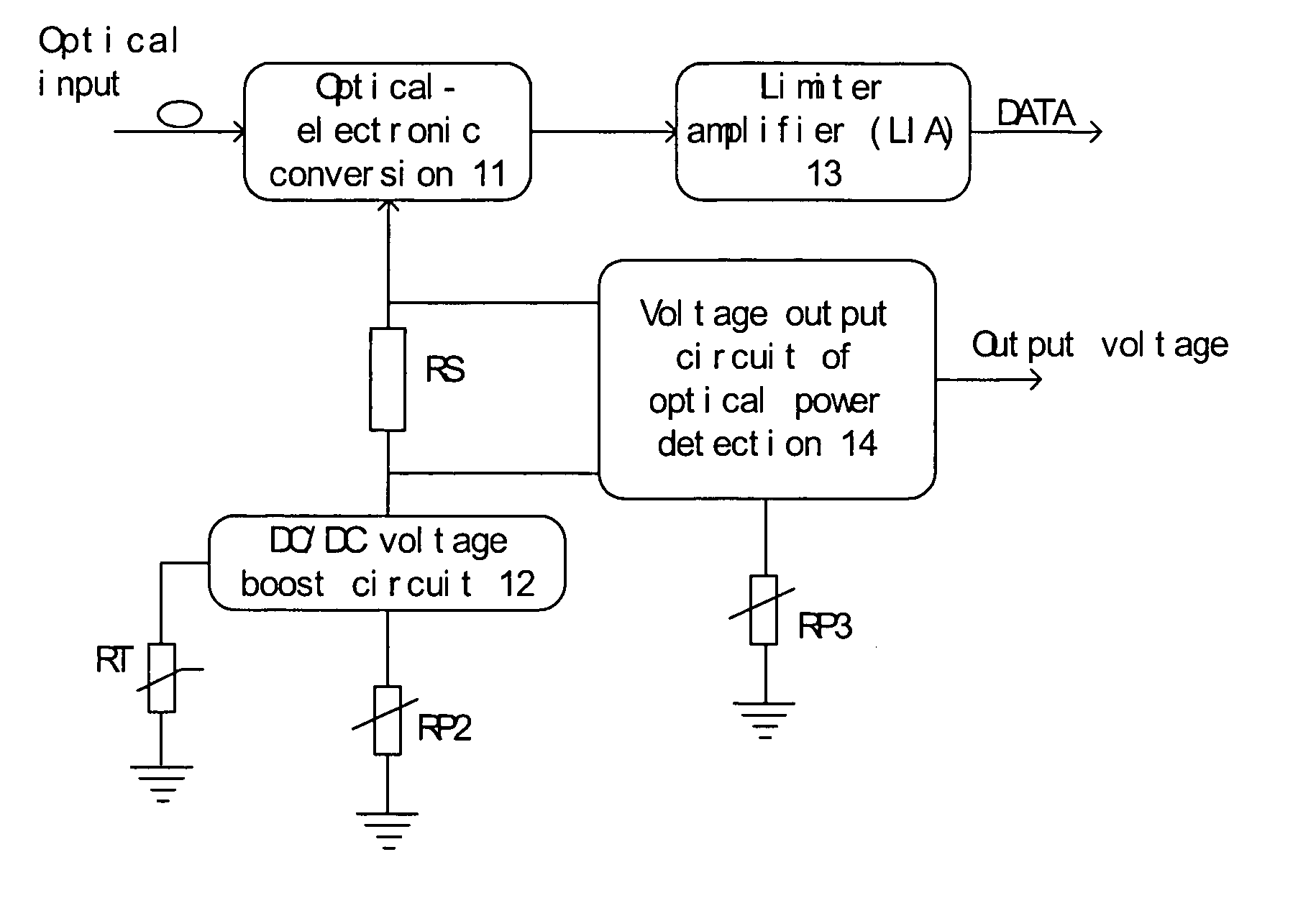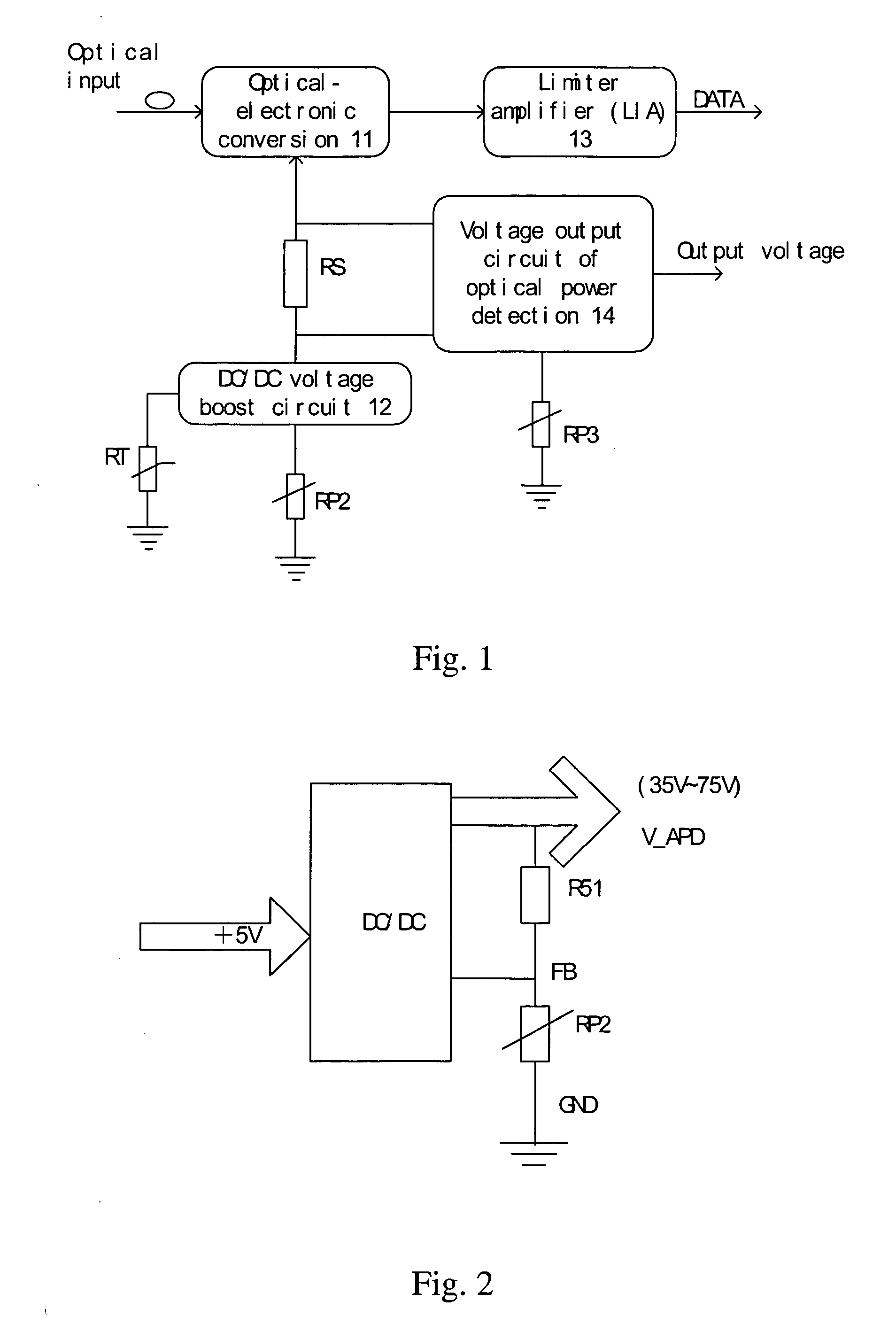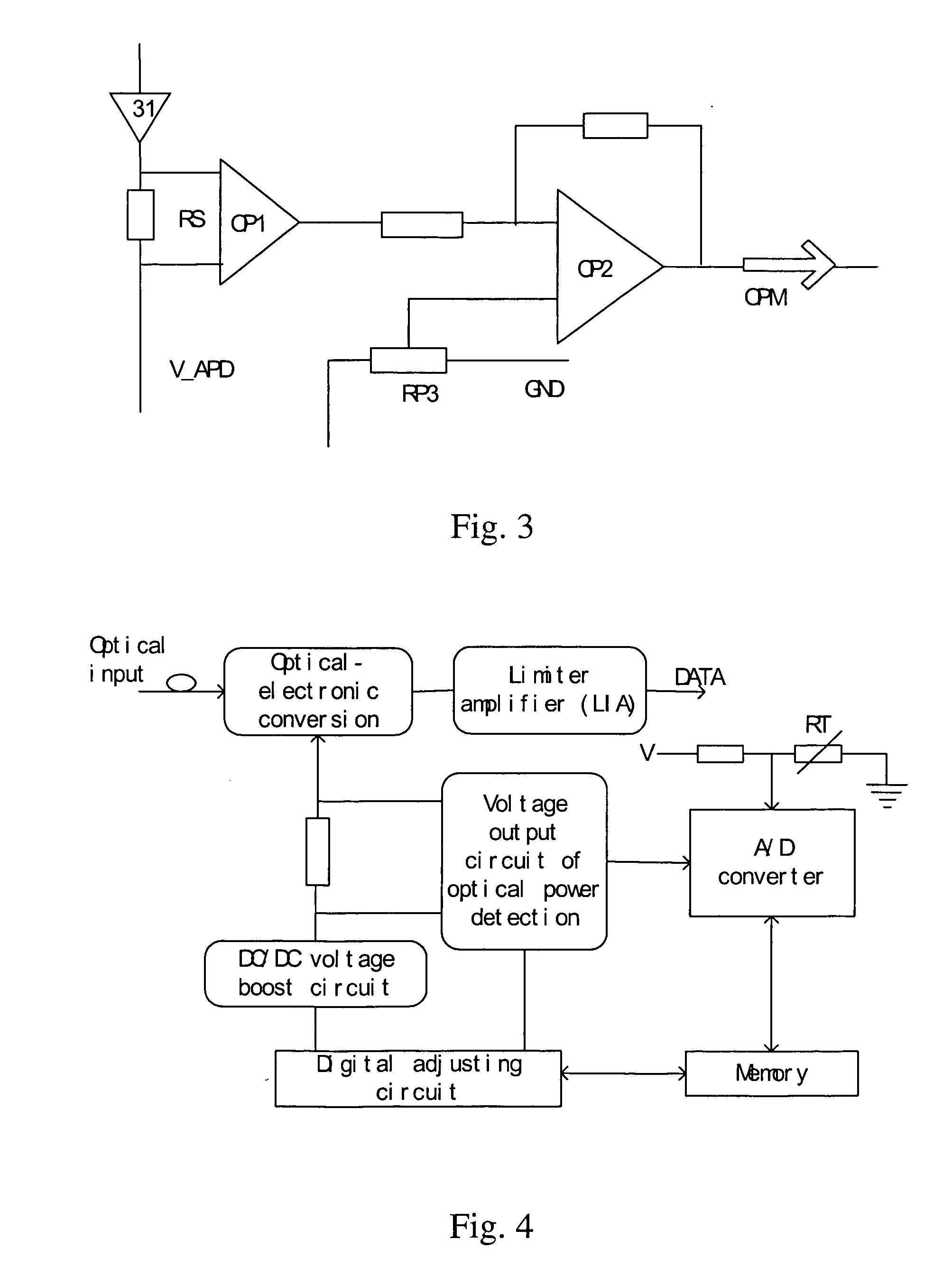Digital regulated light receive module and regulation method
a technology of digital regulated light and receive module, which is applied in the direction of pulse technique, transmission monitoring, instruments, etc., can solve the problems of potentiometer itself, inability to fully compensate for the temperature characteristics of different apd, and inability to track the bias voltage v_apd, etc., to achieve better stability and reliability, easy to test, and longer life
- Summary
- Abstract
- Description
- Claims
- Application Information
AI Technical Summary
Benefits of technology
Problems solved by technology
Method used
Image
Examples
Embodiment Construction
[0080] The invention will be described in more detail with reference to drawings.
[0081]FIG. 4 shows a diagram of a digital optical receiver module. The digital optical receiver module includes elements as follow: an optical-electronic conversion circuit 21, a DC / DC voltage boost circuit 22, a limiter amplifier 23 (LIA), a voltage output circuit of optical power detection 24, a digital adjusting circuit 25, an analog-digital converter (A / D or ADC) 26 and a memory 27. Comparing with the analog optical receiver module, shown in FIG. 1, a digital adjusting circuit 25, an A / D converter 26 and a memory 27 are added in the digital optical receiver module. A thermistor RT measures the optical detector temperature for compensation through the bias voltage.
[0082] The optical-electronic conversion circuit 21 converses a received optical signal into an electrical signal that is amplified by the limiter amplifier 23 and outputted, as shown with DATA in FIG. 4. The A / D converter 26 converts the...
PUM
 Login to View More
Login to View More Abstract
Description
Claims
Application Information
 Login to View More
Login to View More - R&D
- Intellectual Property
- Life Sciences
- Materials
- Tech Scout
- Unparalleled Data Quality
- Higher Quality Content
- 60% Fewer Hallucinations
Browse by: Latest US Patents, China's latest patents, Technical Efficacy Thesaurus, Application Domain, Technology Topic, Popular Technical Reports.
© 2025 PatSnap. All rights reserved.Legal|Privacy policy|Modern Slavery Act Transparency Statement|Sitemap|About US| Contact US: help@patsnap.com



